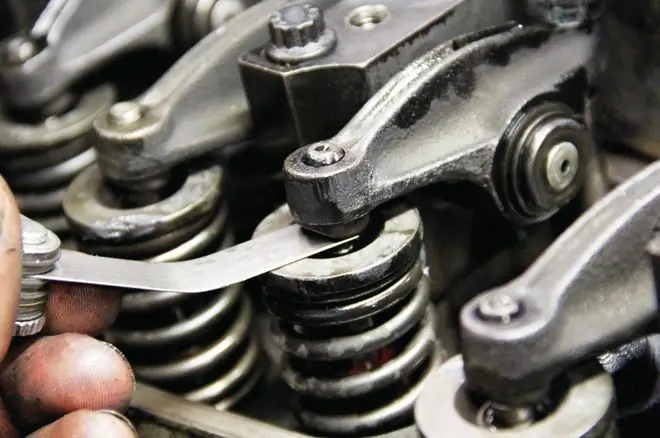2026 Author: Erin Ralphs | [email protected]. Last modified: 2025-01-22 21:14:14
The phrase "carbon wrapping" most often means pasting with a vinyl self-adhesive film that imitates the texture of carbon fiber. The main advantages of using a carbon-look film compared to classic painting are less time and material costs (there is no need to pre-prime the surface, and there is no need to wait until the primer and paint dry), the possibility of self-pasting a car with carbon, a minimum set of tools. There are two types of pasting: "dry" and "wet". The following will describe the carbon fiber wrapping of car parts using the “dry” method.

Required tools
When working, you will need: the carbon film itself with air outlet channels, a hair dryer (better than a construction one, but you can also use a regular one for drying hair), scissors, a stationery knife, a clean soft cloth, it is also desirable to have a squeegee and a primer for vinyl film. The thicker the film, the better it hides the unevenness of the pasted surface, but a very thick film is worse glued in places of underturn, the thickness of 200 microns is considered optimal.
Preparationsurfaces
The durability of the film coating largely depends on the quality of this stage. First of all, it is necessary to get rid of chips, cracks, dents, as well as pockets of corrosion on the coating, for this you can use automotive putty. After drying, the places covered with putty must be cleaned with sandpaper with a grit of at least 300. Then it is necessary to thoroughly wash the pasted surface from dirt and degrease with gasoline or solvent.
Cut off a piece of film of the desired size, this size is the sum of the area of \u200b\u200bthe part and the margin for tucking from all sides. It is better to take a larger stock - up to 8-10 centimeters for large parts. It is important that the drawing lines on adjacent parts are directed in the same direction.
Carbon wrapping starts with straight sections. Twisting is done last. The film heated by a hair dryer can be stretched, and due to this, uneven surfaces are pasted over. The air from under the pasted film is expelled with a squeegee or cloth from the center to the edges. If there is a primer, then the edges of the pasted part are smeared with it to enhance adhesion in the places of the turn. Pasting a car with carbon fiber is carried out according to the principle: one part - one piece of film. Do not overheat and do not stretch the film too much, otherwise you will break the structure of its surface, such a defect will be clearly visible. After wrapping for several weeks, it is better not to wash the car and do not drive at high speed so that the film shrinks and "remembers" the shape of the car.

If the airafter pasting, it still remained under the film, then it is necessary to press this place with a damp cloth, and then warm it up with a hairdryer, when heated, the film shrinks and the defect, most likely, will not be noticeable. Pasting the interior with carbon fiber is made according to the same principle, only the dimensions of the parts are usually smaller and they have a more complex shape.

If you follow these simple tips, car wrapping with carbon fiber will be an easy task for you, and the result will please you and your friends.
Recommended:
How to polish scratches on a car with your own hands: technology and materials

Scratches on a car body are quite common. You can find them anywhere, unsuccessfully opening the door, parking too close to a bush, not noticing an obstacle, and in a number of other situations. In some cases, you can get rid of them only by resorting to painting in the cabin, in others, you can polish the scratches on the car with your own hands
Replacing the timing on the "Prior": instructions, work technology and the necessary tools

One of the most popular cars today is the Lada Priora. Replacing the timing on this model, as it turned out, is a fairly common phenomenon. In general, Priora is a good car. It has a relatively modern design and is equipped with a reliable VAZ-21126 engine - a 16-valve engine with a displacement of 1.6 liters. But the quality of the timing belt is a significant drawback for Priora
How to clean pistons from carbon deposits? Methods and means of cleaning pistons from carbon deposits

In order for the car engine to work properly for a long time, you need to monitor its condition, periodically cleaning the elements from carbon deposits and dirt. The hardest part to clean is the piston. After all, excessive mechanical stress can damage these parts
Adjustment of engine valves 4216 "Gazelle": procedure, work technique, necessary tools and expert advice

Car enthusiasts can do without the services of specialized car repair shops if it is necessary to adjust the valves of the 4216 Gazelle engine. Consider how this is done with your own hands in a garage environment
Professional car polishing: tools and technology

Professional car body polishing: features, technology. Do-it-yourself professional car body polishing: recommendations, tools

